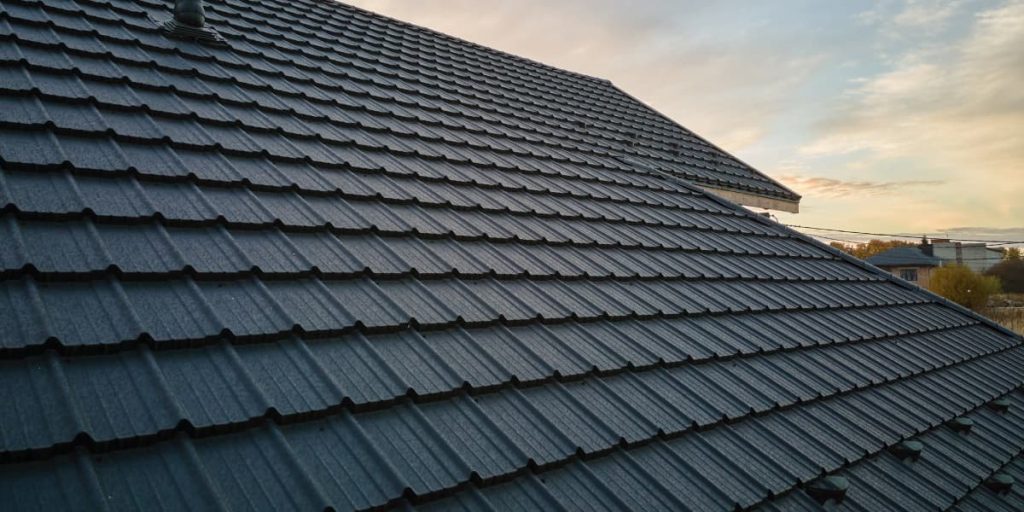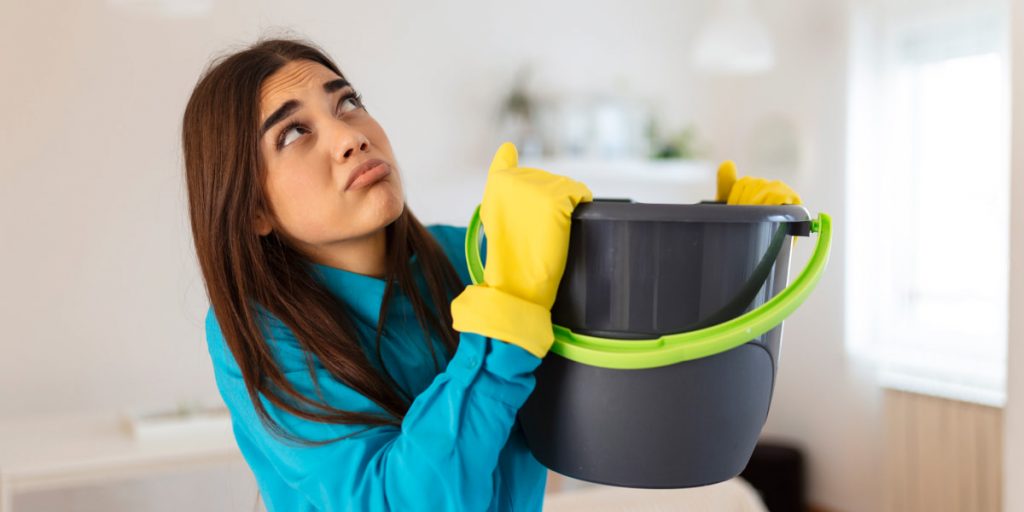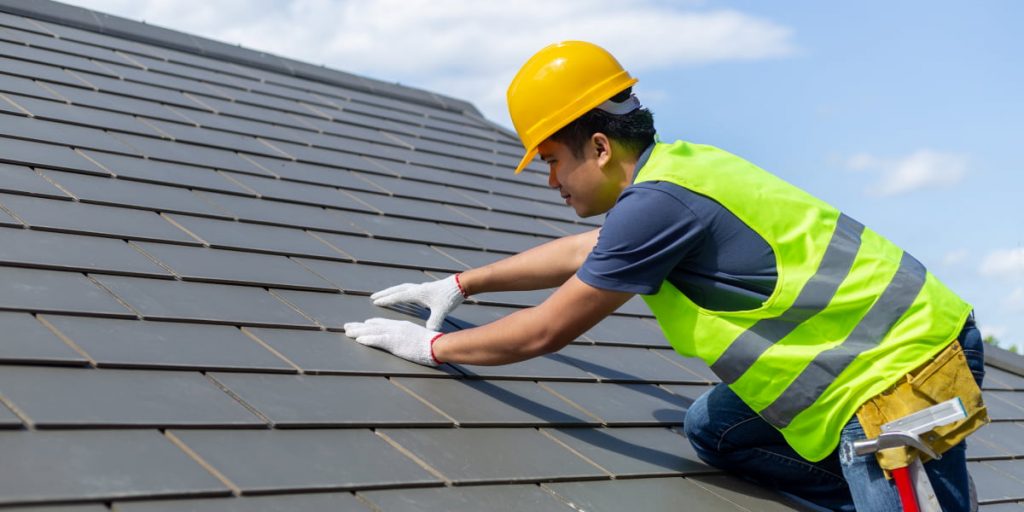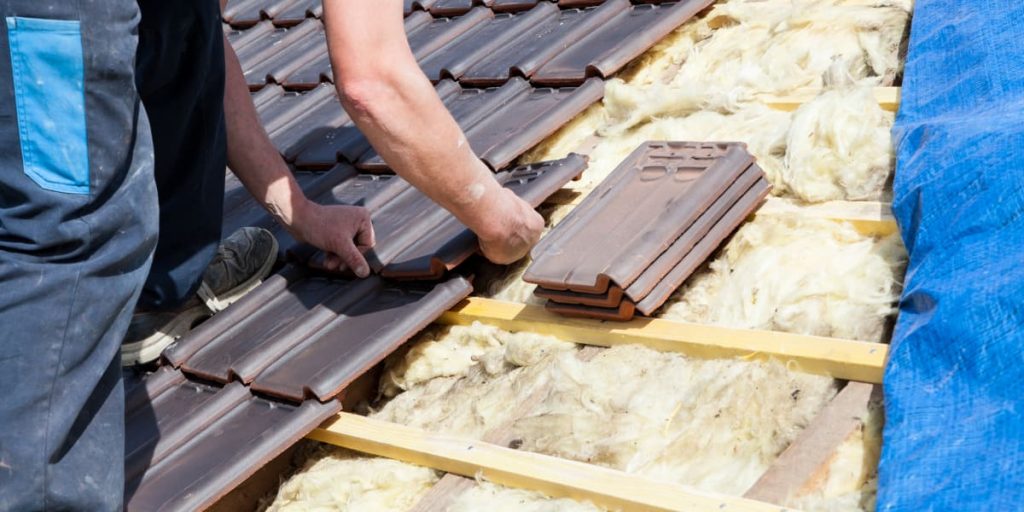Published on November 10th, 2022
Last updated on February 3rd, 2023
How To Repair A Roof Leak: Roofing Leaks Repair Guide

Typical mistake homeowners make is not paying attention to the appearance of small leaks, relying on the fact that the problem will resolve as it appeared. But this leads to the breakage scale only increasing with time. And instead of fixing a small patch, there will be a need for a major roof repair. One rule to remember here is that the sooner you repair the roofing leaks, the less money it will take to fix them. Roof leaks are an issue that occurs sooner or later with any roofing. This failure has a devastating effect on other elements of the building structure, like the ceiling, walls, and electrical wiring. The interior will also suffer irreparable damage. If the furniture absorbs moisture, it will soak and become unusable. Therefore, if you have a leaking roof, use our guide on how to repair a roof leak quickly.
What are the Causes of the Roof Water Leak?

Nowadays, there are a huge number of reasons for roof leaks. Such causes include errors in the roof installation and its wrong operation. Consider the most common mistakes:
- Neglection of the mandatory stages of roofing installation, use of substandard materials, cooperation with an unproven construction company, and non-observance of norms when installing a waterproofing layer. This group of reasons can also include damage to the roof under external influences, such as heavy rainfall or strong winds.
- Another type of roof water leak includes improper maintenance of the roof covering. Experts recommend regular roof inspection for various defects and routine coating repairs at least once every six months. Failure to comply with this recommendation leads to significant roofing material deterioration, the damage to which was not detected in time. In this situation, the only proper solution is to replace the roof covering completely.
- One more common cause of roofing leaks that you can fix is the improper installation of various roof elements, such as antennas, pipes, skylights, valves, etc. Breach of tightness in the installation places leads to damage to the roofing or waterproofing layer.
- No less serious problem is considered damage to the roofing pie’s stacked thermal insulation and vapor barrier layers. Such mistakes often lead to condensation, damp spots, mold, and room mildew.
Neglecting problems with the roof covering integrity can lead to leaks in the roof and, consequently, damage to electrical wiring and the destruction of the ceiling slabs. Eventually, the roof frame may be destroyed, requiring a major building rehabilitation and a complete roof reconstruction.
What kinds of roof leaks can exist in your home or building?
Once you’ve identified the presence of a leak in your home’s roof, you need to understand the type of the leak. You need this to build a proper plan for fixing roof leaks. Let’s look at the most common ones:
- Leaks after precipitation
They occur during or immediately after precipitation. Rain leaks bother residents of apartment buildings and private homes during seasons of abundant rainfall. Such a problem is associated with damage to the roof covering or watertight.
- Leaks during the thaw
Snow leaks appear at the roof components joints during abundant snow melting and accumulate on the roof. The main cause of such leaks is freezing meltwater on the surface, roof overhangs, gutters, and valleys in the winter. Ice blocks the drains, meltwater rises along the roof and thus enters the depths of the roofing pie.
- Flashing leaks can appear after precipitation
The main cause of a roof water leak is soaking the insulation layer and exceeding the maximum allowable water vapor pressure on the roofing material. As a rule, the pressure rises significantly in summer due to the roof surface heating, and then there is a breach of waterproofing roofing.
- Dry leaks
It, also sometimes called summer leaks, or the least expected variant of roof leaks. Such leaks can occur in the summertime due to the condensation accumulation inside the roofing pie and getting all of its layers wet. Dry leaks are not associated with precipitation.
The causes of their appearance include errors in the installation of various elements of the roof space, as well as micro-damage in the roofing material, which is difficult to detect. Typically, condensation is due to improper thermal insulation installation.
What Do I Need to Do to Find Roof Leaks?

Inspecting the roof for leaks is a fairly complex process, often relying on qualified professionals. You should visually inspect your roof inside and outside, paying the most significant attention to roof corners and hard-to-reach places. The following are some basic steps of a roof inspection when finding leaks:
- The traditional way to inspect the roof is its visual inspection, carried out in the dry season. The inspection should begin with diagnosing problems within the roofing pie, that is, areas of dampness, fungus and moss, darkening of the roof pie layers, damage to rafters, floor joists, and damage to the roof’s interior layers.
- After the interior inspection of the roof for leaks, the roof’s exterior surface is analyzed. Diagnosis of damage to the roof covering in pitched structures begins from the roof’s ridge. It is carried out with the mandatory observance of safety rules. Start a visual diagnosis of a roof that can be on any side of the surface.
- Particular attention should be paid to all fixings, namely places adjacent to utility networks, chimneys, vents, etc.
- After finding and inspecting the exterior surface of the roof for leaks, it is necessary to inspect the roofing materials with which the roof is covered. Also, you have to look for chips, cracks, and other defects.
- After that, you need to diagnose damage to the drainage system. If necessary, all the necks, pipes, and gutters are cleaned of accumulated debris, including leaves.
If an independent visual inspection of the roof does not yield results, we recommend contacting construction company representatives. It is best to choose a professional organization engaged in restoring roofs and their water tightness for a long time and, therefore, with many years of experience.
If necessary, specialists use infrared cameras to diagnose damage, which allows them to accurately locate and size all the water leaks to the roof covering. Therefore, turning to professionals will save a lot of effort and time spent on self-repairing the roof.
4 Methods to Repair Leaks Depend on the Roof Covering

Methods to fix roofing leak damage vary markedly depending on the cause, type and size of the leak, as well as the material of the roof in which the leak occurs. Consider techniques to restore the roof covering and waterproofing layer of different materials.
- Soft Roof Leaks
Damage to the soft roof may be associated with natural deterioration due to the long-term use of the coating and with the effects of precipitation or ultraviolet radiation. Leaks occur at the destruction of joints or seams of the soft roof, at the delamination of the material in areas adjacent to walls and pipes and at the appearance of cracks and washouts in places where rainfall accumulates.
There are several types of leak repairs to soft roofing:
- Local works: in this case, only visible surface defects are eliminated, which are sealed with patches. You can easily cope with the performance of such works without the help of specialists. However, short-lived local repairs are considered rather unreliable in the long run.
- Reconstruction in two layers: in this case, a new layer of soft roofing is laid on top of the old one. This technology’s main disadvantage is increasing the load on the structure by increasing the number of roofing layers. Very often, there is a deformation of the rafter system and floors due to this additional load.
- Flat roof leaks
Water leaks in a flat roof result from damaged or poorly installed waterproofing. Usually, as with soft roof construction, it is challenging to find a place on a flat building where water enters from the outside. The reason is that water can go under the waterproofing layer in one place.
Like a soft roof, you can repair any flat roof in two ways and one additional:
- Local repair of leaks. This repair of certain leak places on the roofing, usually visible damage to the hydrophobic coating and places adjacent to the various structures on the roof, such as parapets, chimneys, vents, etc.
- Installing a new layer of waterproofing over the existing one. The disadvantage of this solution is the destruction of the pie elements when water gets it during operation. Since the water remains inside without complete disassembly. Therefore, the insulation can be damaged and lose its properties.
- Complete the roofing pie replacement. A complete replacement usually includes the top waterproofing coating, the screed underneath it, and the existing thermal insulation. The screed is likely to have fallen into disrepair and deteriorated due to water ingress and temperature fluctuations.
To fix leaks in the roofing of metal can lead to three main reasons: builders’ mistakes at the roof installation stage, the use of low-quality fasteners and the hole formation in the coating due to improper roof cleaning. The first problem can compensate only for major repairs, but it is best to ask for help from a construction company.
The second issue for roof leaks, namely poor quality fasteners, that you can deal with at the lowest cost. But the sealing washers and other fasteners can deteriorate under the influence of temperature. In that case, it is necessary to follow the following sequence of actions:
- Wooden wedges are inserted into the hole above the area to be treated, under which small pieces of parchment or roofing paper are placed.
- Self-tapping screws and damaged sealing washers are removed.
- The poor-quality fasteners are replaced.
- Loose adjacent fastener sheets are tightened.
- Ceramic roofing
The detection of leaks in the ceramic roof can lead to the displacement of coating components concerning each other. It can be the accumulation of condensation in the sub-roof space and wear and tear of roofing materials due to long-term use. Often, the problems also lead to poor-quality adhesives at the installation stage.
In most cases, the correction of ceramic coating involves the restoration or replacement of theindividual roof elements. In such cases, craftsmen widely use patches or the same removal and reinstallation of damaged sheets of material. This method of repairing ceramic roofing leaks does not require much effort and time, so you can easily manage it independently.
How to fix roofing leaks in the joints of various utility connections and pipes
Seams, joints, and adjacencies are the weakest in any structure and will leak in the first place. To eliminate all kinds of water roof leaks at joints, you must use the following technique:
- Preparation. It is necessary to remove corrosion, exfoliated elements, dust, and dirt from the surface.
- А special waterproofing tape is glued on the joints. The choice depends directly on the surface on which it will be mounted. Some tapes have their adhesive base, and some are attached using a unique epoxy adhesive;
- Waterproof coating. If necessary, the section of the tape with the overlap is covered with a unique waterproofing material resistant to UV radiation, such as polyurethane waterproofing or compositions such as liquid rubber.
Bottom Line
Remember, you can repair even serious roof leaks. We all know that owners who have tried to save money on roof construction have often spent substantial sums to fix it. So we do not encourage you to trust all the work of professional crews. We recommend that you evaluate your strength and the consequences of possible decisions. However, remember that at least a consultation can help you and make life easier.
FAQ
What is better to choose, the local repair of leaks or the complete replacement of the roofing?
It is essential to understand that the regional elimination of visible defects does not guarantee you get rid of leaks. It’s just an attempt to make do with little blood, which can help solve the problem, but temporarily or not help at all. Therefore, it is better to decide on the second option.
Is it expensive to make repairs and fix roof leaks?
Typically the price is between $400 and $2,500. However, prices may change due to the specifics of a particular facility and the job’s complexity. All individual features should be considered to get an accurate estimate.
How to stop a leaky roof?
Self-adhesive bitumen tape solves the problem faster and more effectively than other materials. It is carefully applied to the surface, removing the protective layer from the adhesive side, and rolled out with a pressure roller to eliminate air bubbles.
How to prevent roof leaks?
You should do a regular inspection of your roof. It is optional to do it every day or every week. Once every six months is enough. Also, do not allow the accumulation of rainwater and snow on the roof. Keep birds from nesting on the top. It can cause it to wear out quickly.


